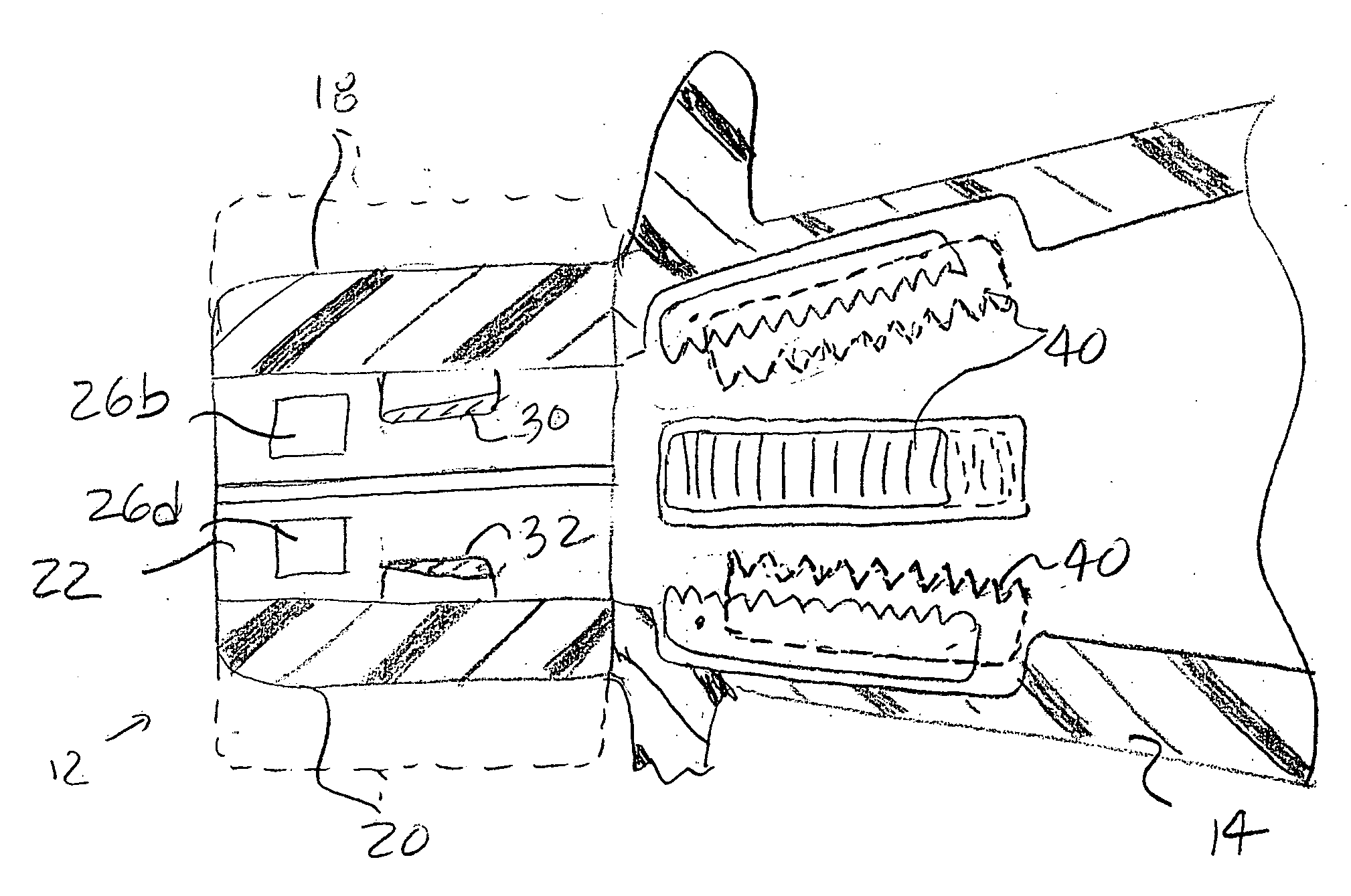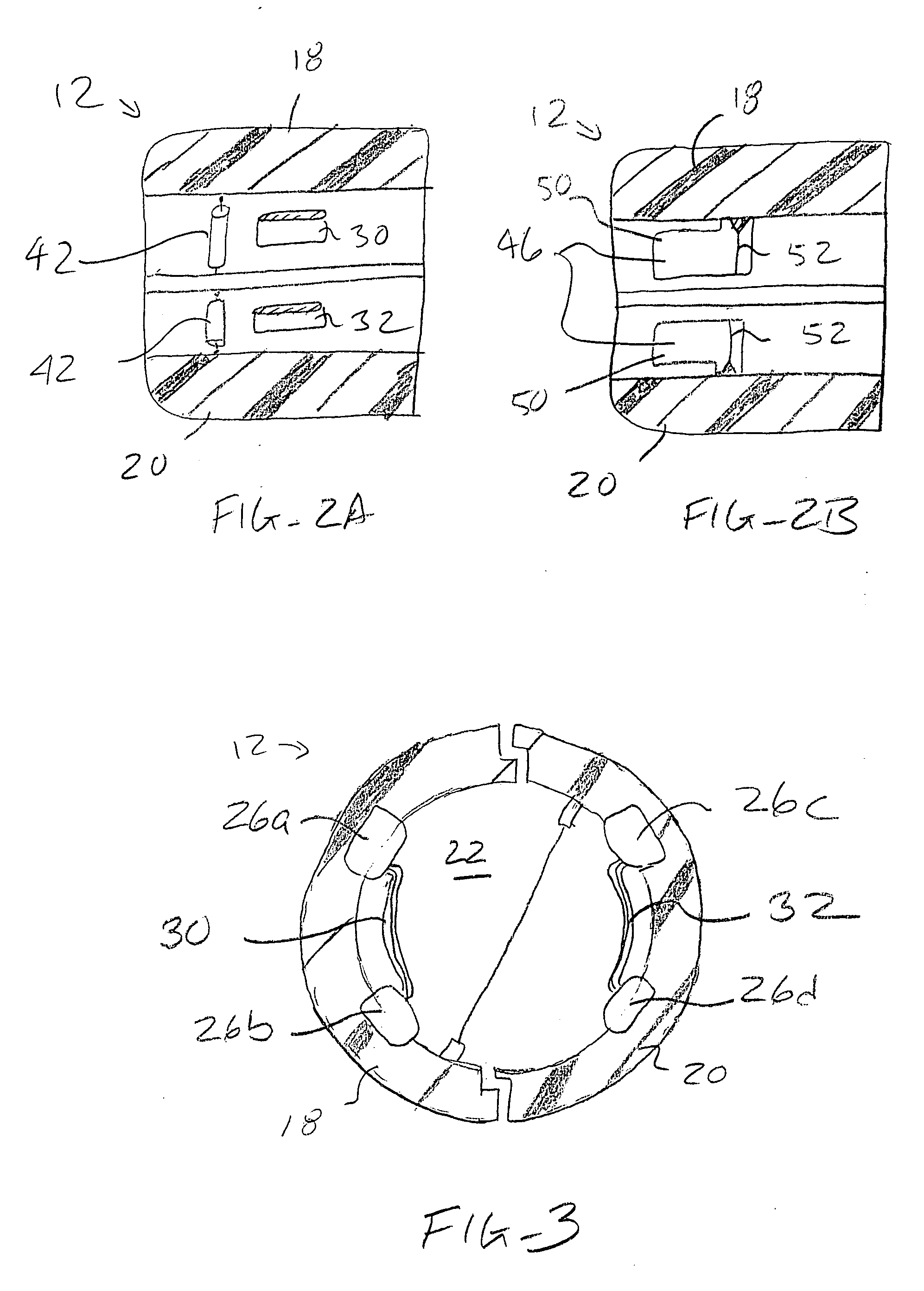Assisted systems and methods for performing transvaginal hysterectomies
a technology of assisted systems and methods, applied in the field of medical equipment and methods, can solve problems such as compromising ability and exposing patients to risk, and achieve the effect of facilitating the removal of the uterus
- Summary
- Abstract
- Description
- Claims
- Application Information
AI Technical Summary
Benefits of technology
Problems solved by technology
Method used
Image
Examples
Embodiment Construction
[0021] A transvaginal hysterectomy system 10 constructed in accordance with the principles of the present invention is illustrated in FIGS. 1-3. The system 10 includes a distal ring assembly 12, proximal body portion 14, and an insertion flange 16. The insertion flange will be used for positioning the device against the vaginal os when the distal ring assembly 12 is to be positioned within the vagina. In other embodiments where the device might be positioned outside of the vaginal os, the flange 16 would not be necessary.
[0022] Referring now in particular to FIGS. 2 and 3, the distal ring assembly 12 comprises ring halves 18 and 20 which surround an opening 22. The ring halves 18 and 20 can move transversely apart, as shown in broken line in FIG. 2, and respond to passage of the uterus therethrough. Thus, the ring assembly 12 can accommodate different uterine sizes of different patients.
[0023] Four electrode pads 26a, b, c, and d are formed over an inner surface of the distal ring...
PUM
 Login to View More
Login to View More Abstract
Description
Claims
Application Information
 Login to View More
Login to View More - R&D
- Intellectual Property
- Life Sciences
- Materials
- Tech Scout
- Unparalleled Data Quality
- Higher Quality Content
- 60% Fewer Hallucinations
Browse by: Latest US Patents, China's latest patents, Technical Efficacy Thesaurus, Application Domain, Technology Topic, Popular Technical Reports.
© 2025 PatSnap. All rights reserved.Legal|Privacy policy|Modern Slavery Act Transparency Statement|Sitemap|About US| Contact US: help@patsnap.com



